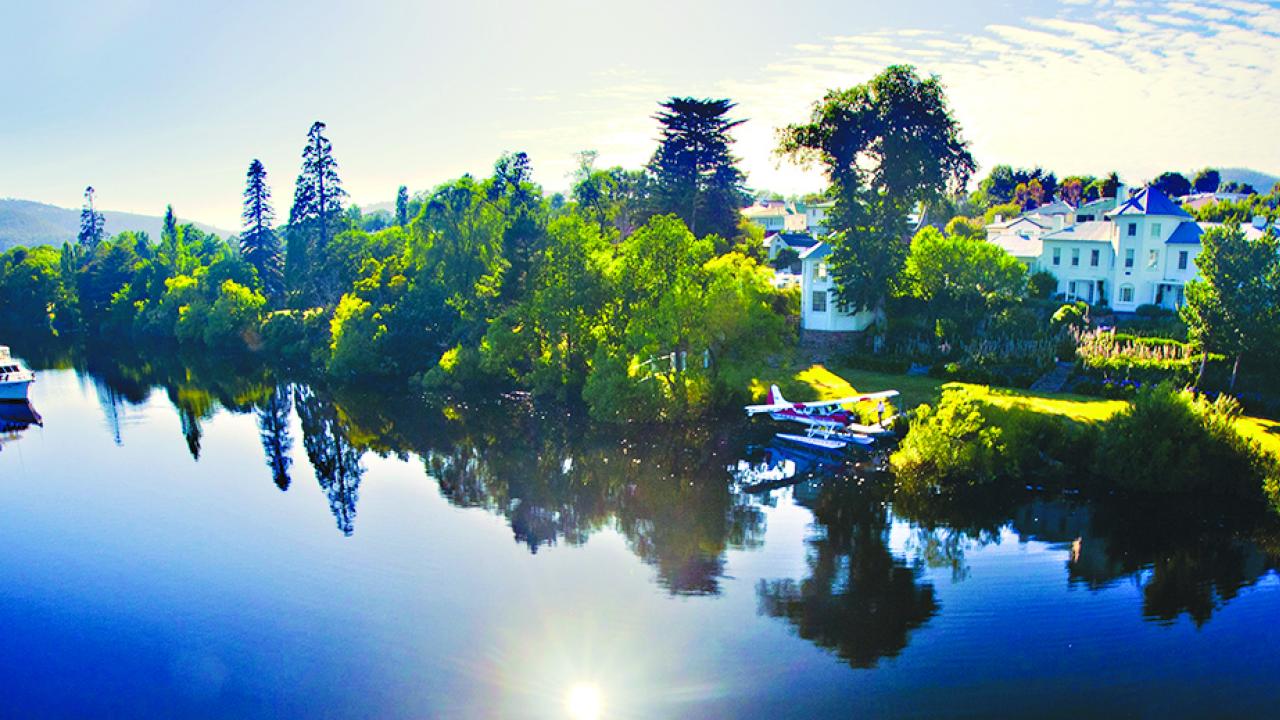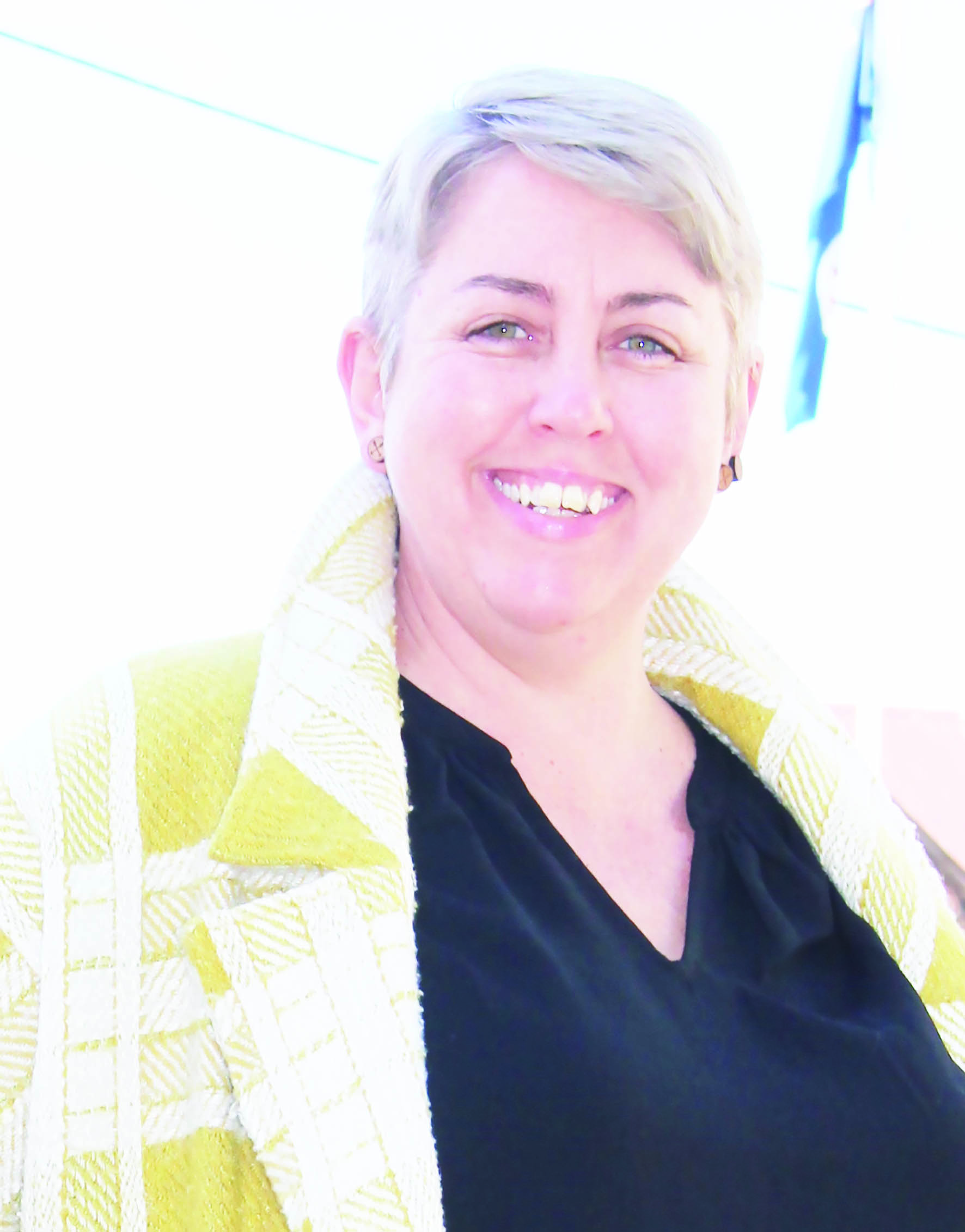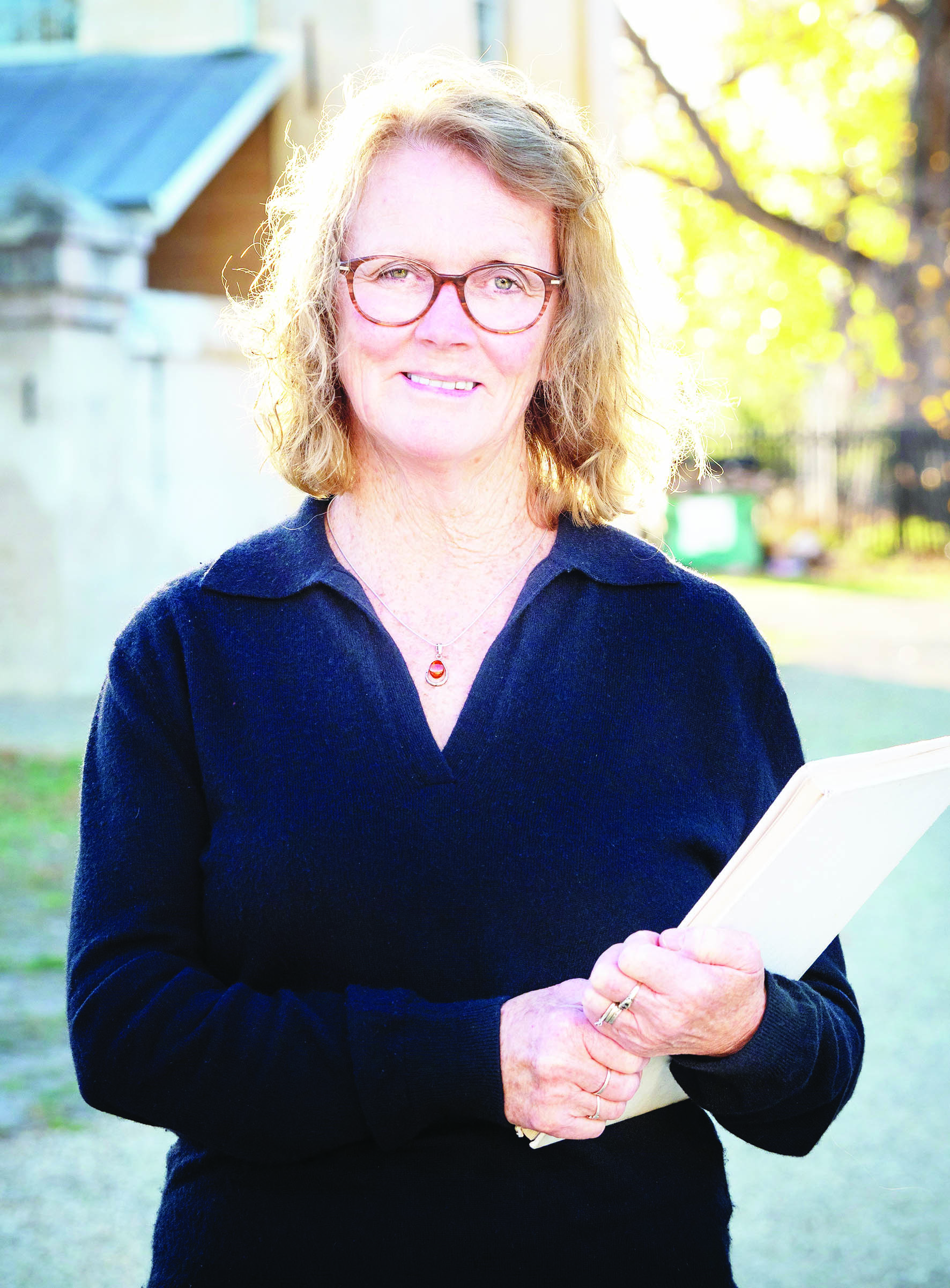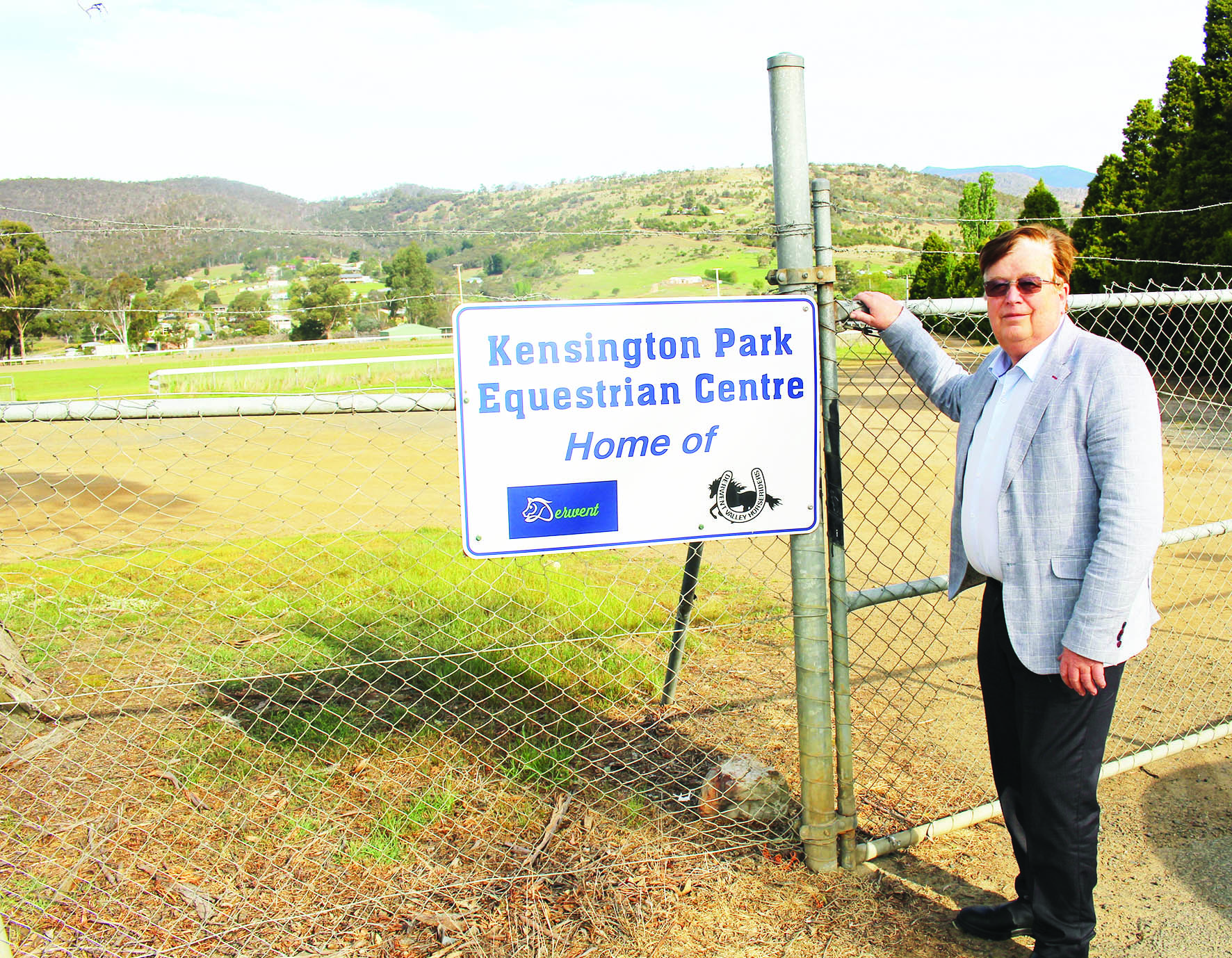What the future holds for a town on the move

THE Derwent Valley is a place of great history and great potential.
Green fields, tall trees and clean air and water nourish locals with a natural quality of life that is the envy of anyone on the planet. Our vegies are big, our cattle happy, our fleece comes in fine and warm.
Renewable energy powers our homes, and we live among forest and mountains, rich in biodiversity that happily makes its way through our yards and gardens.
In the 217 years since New Norfolk was established we have seen boom and bust, growth and retraction.
In 1819 the first major road in Tasmania was completed, connecting Hobart with New Norfolk. This opened up the fertile valley district, and allowed a swifter response to bushranger activity.
In 1827 Governor Arthur issued an order to create the infirmary that would eventually be known as the Royal Derwent.

In 1941 the Boyer Mill was constructed as the first producer of newsprint paper in Australasia. These two major entities provided culture and employment, healing and production, and set the groundwork for many homes, parks and services to be built and established.
Times change, industries vanish, and popular thought sets the trends.
The Derwent Valley in 2024 finds itself in a situation where Hobart Road is the artery to employment and further education; and health, allied and mental health services are for the most part centralised in the metropolitan hub.
I sometimes hear the old days were better. That High Street was bustling, and that whole families worked in the fields come harvest. I know this is true, but I don’t believe our valley is lost. I see that it’s changed, and that opportunity now exists for new thought and the establishment of sustainable industries.
We have the power, we have the water, we have the roads and we have the rail which stretches all the way to
seaports in the north.
We have the workforce and we have the heart.
My greatest goal is to have the people of the Valley fed, housed, educated and offered pathways into
meaningful employment.
Children should be able to stay in the community they have grown up in, and reasonably expect to find jobs
and buy a home. At the same time we need to preserve local history and protect our precious regional identity.
We are not a satellite of Hobart, we are the Derwent Valley, and I will continue to utilise every skill and
network I possess to see a brighter future for us all.
– MAYOR MICHELLE DRACOULIS

THE Derwent Valley I envisage in 50 years will be a proud, prosperous and literate community.
Proud because of the community action that led to the bipartisan support of state and federal government and the local council to fund and develop a master plan for the Willow Court Barracks precinct, and for their world-leading approach to heritage management of former disability institutions sites.
This world-leading approach, proposed by University of Technology Sydney researchers, ensured principles of co-design and co-production of all activities relating to the site’s heritage management complied with the United Nations Convention on the Rights of Persons with Disabilities and Australia’s Disability Strategy 2021-2031.
This sites-of-conscience approach ensured inclusion and equality of people with disability in the heritage
management of Willow Court.
Proud because the sites-of-conscience approach taken to developing a masterplan for Willow Court included
mapping out a governance structure to address issues related to reparative planning, community-led redress
and remembrance, and official redress and remembrance.
Proud because the sites-of-conscience practices provided new approaches in Australia to interpreting disability institutions. Interpretation of such sites had focused on historical content and built heritage, in the absence of providing an understanding of the social and political processes that enabled legal human rights violations or the trauma inflicted on those incarcerated.
Proud because the sites-of-conscience practices implemented at Willow Court prevented this erasure from happening, by giving voice to victims/survivors and families, and by engaging visitors in dialogue about past and related contemporary human rights issues.
Proud and prosperous because the wider Australian community and visitors from overseas can benefit from opportunities at Willow Court to engage in sites-of-conscience practices that are designed to give voice to victims/survivors of disability institutions through truth telling that leave the truths of their human rightsviolations unquestioned.
Proud and prosperous because the human experience of victims/survivors of disability institutions in Australia is no longer at risk of being erased completely through what was the typical interpretation of such sites that was based on a broad view of the social history, institutional features, and heritage architecture, and interpretation of that history limited to use of story boards, and paranormal experiences.
Proud, prosperous and literate because sites-of-conscience practices implemented at Willow Court provide an opportunity for the wider Australian community and international visitors to engage in activities to ‘remember the past to build a better present and future’ for people with disability, and for the local community to understand and be acknowledged for their important role in the history of disability institutions in Australia.
Proud, prosperous and literate because Willow Court is a vibrant, sustainable cultural heritage and arts
precinct where people heal, learn, create, work and visit.
– ANNE SALT, WILLOW COURT ACTION GROUP

AS an economic driver, new homes are an excellent indicator how things are progressing.
New Norfolk with its 2500 homes is becoming more entwined with the jobs powerhouse to its south, aligning the factors that draw new homeowners into our Valley.
It is appropriate to document some factors that will mark the future of the area.
The duplication of the Lyell Highway between Granton and New Norfolk over the next few years will encourage growth in and around New Norfolk, and go some way the alleviating the housing shortage and homelessness in the state.
At the same time, there are promises by the Tasmanian Government to build 10,000 dwellings in Tasmania in the next 10 years. (The Federal Government has also promised 1.2 million homes)
In Tasmania this will require some 600ha of residential land, with 15-20 per cent of land developed for public housing.
In the 1950s and 1960s there were about 5.8 persons per household. This number has now declined to about 1.6 per household.
This means there needs to be 3.5 times as many dwellings to accommodate the same number of persons.
In Tasmania increases in population also push demand for further housing. Societal changes, such as people deferring getting married and choosing to live alone are also creating demand.
There is a move to construct smaller houses, but little provision for local regulations to allow for it. Instead we build three and four-bedroom dwellings – ideal for the 1960s – when over 50 per cent of current dwellings only have one or two occupants.
New Norfolk was at one period called The Hills and for very good reason, but those hills are now limiting the town’s expansion.
There is somewhere around 80ha locally within the TasWater-serviced areas for sewer and water supply; typically about 20 per cent of the area available in a development is used for roads and public open space.
The planning scheme requires a minimum of 15 houses per hectare, thus the remaining 64ha (approx.) could provide sites for about 1000-1250 homes, 50 per cent more than present.
Expansion of development to the northwest of the New Norfolk township will require an upgrade of the access to the Derwent River bridge from Rocks Road and the Lyell Highway.
This should be in the form of a roundabout like that at the Blair Street end of the bridge. And here’s a thought about the types of homes we should consider: the apartment blocks commonly seen in Europe and the Middle East, usually about four storeys.
Future subdivisions should “provide for residential use or development that accommodates a range of dwelling types at suburban densities” as enunciated in planning schemes.
The mixing of smaller dwellings throughout a development creates a community that more closely reflects the considerable variation in family structures that exist in today’s society. More, these smaller dwellings are more affordable for the smaller families.
These market forces, in total, suggest a continued increase in New Norfolk’s population, with some real benefits for everyone.
This town used to have shoe shops, jewellery store, clothing retailers, a white goods retailer, dry cleaners and other services which have now disappeared.
Think of it: these types of shops may become viable again with an increase in demand as a result of an increase in population.
– PETTER BINNY, Retired land surveyor and Councillor




Add new comment